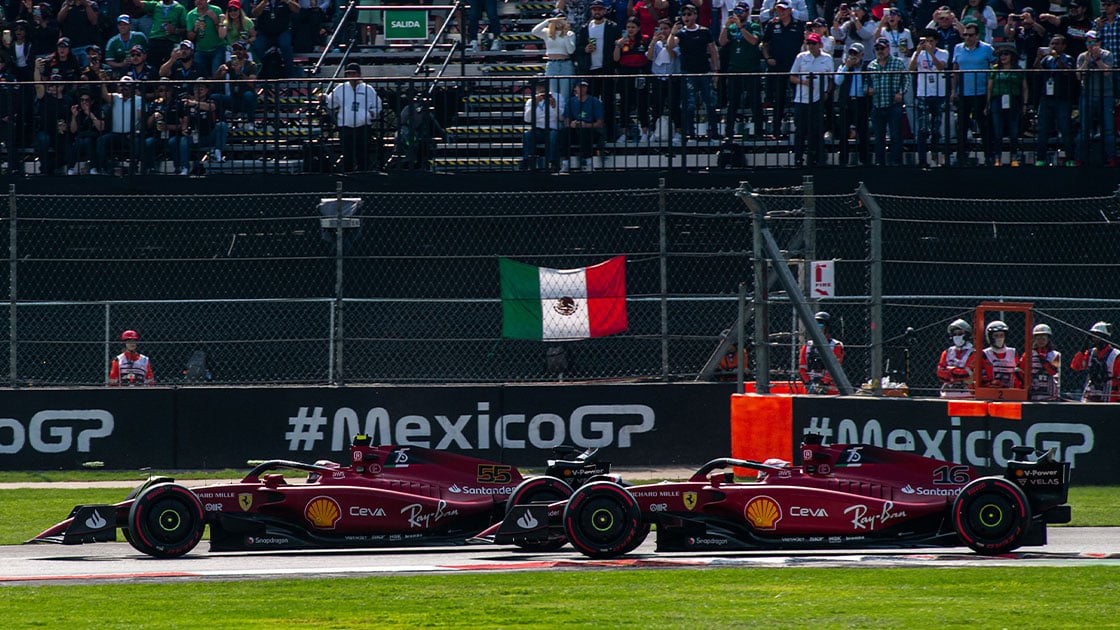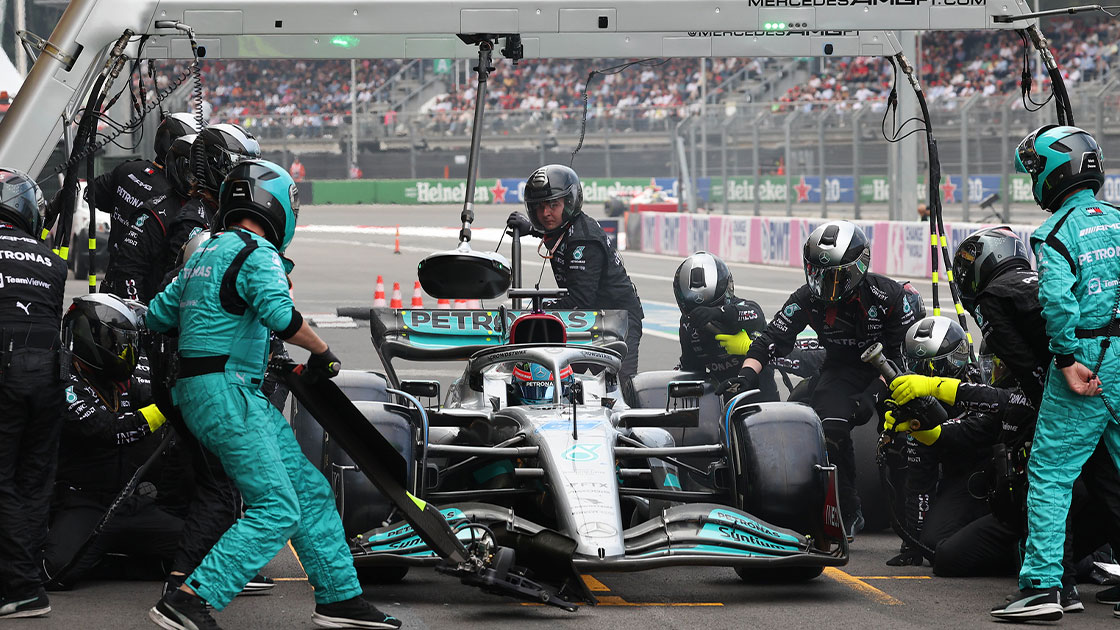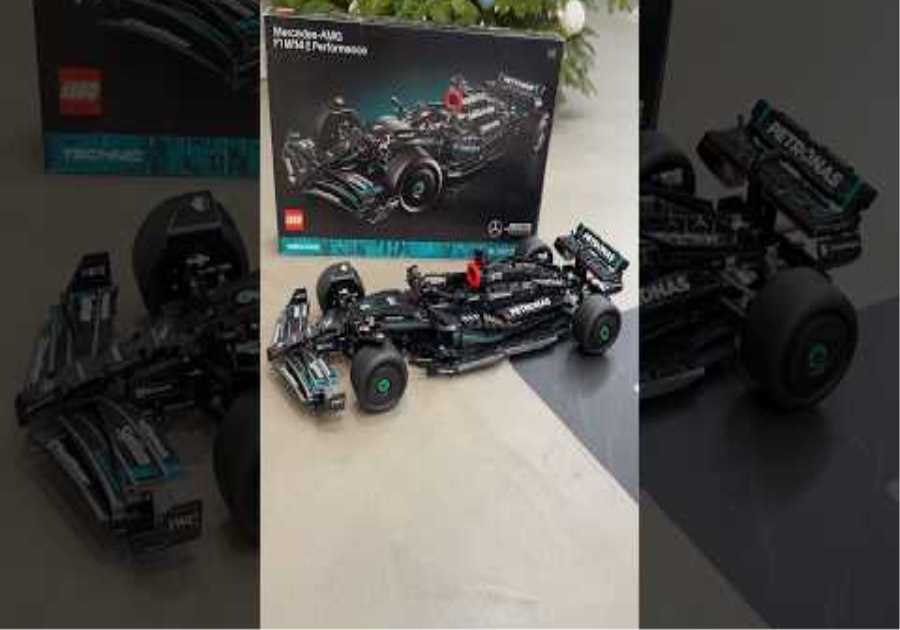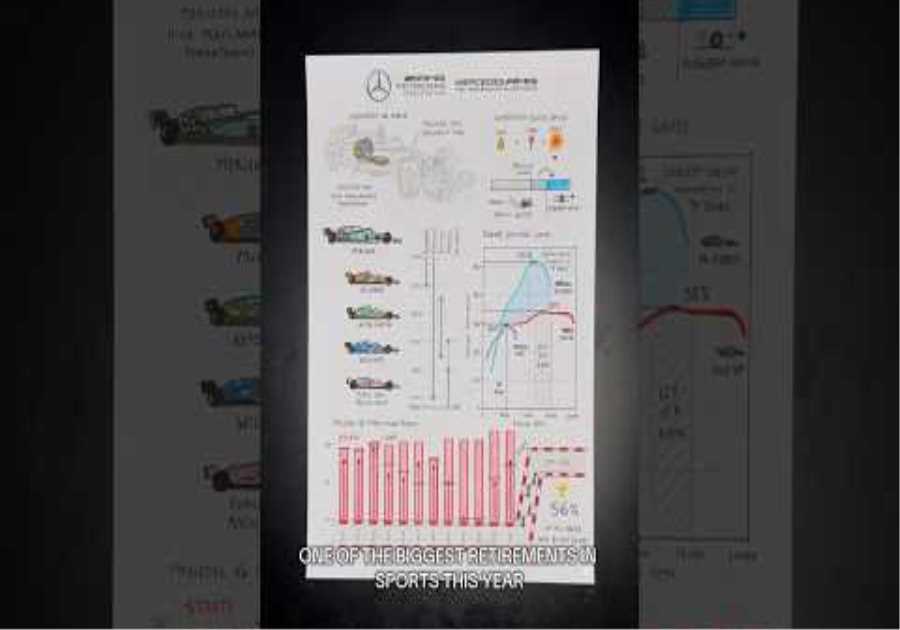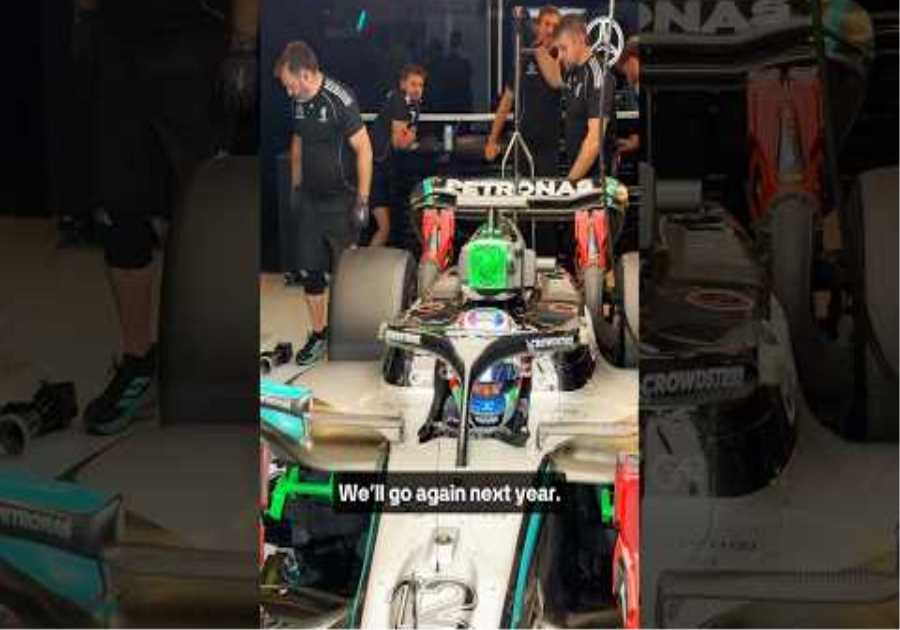
Max Verstappen won the Mexican Grand Prix. Of course he did, he always wins the race. He’s possibly the best driver in definitely the fastest car operated by the sharpest team. The only notable thing about it was it made him the first man to win 14 grands prix in one season.
It was another magnificent performance, ground out by finding the car’s initially elusive sweet spot, putting the final Q3 lap together against a fast driver in a rival car which can be a bit snappy in low-speed corners, winning the start and carefully measuring out the tire grip while keeping a gap to Lewis Hamilton’s Mercedes behind. And from having the rival team choose the wrong tires. It was enough to see him clear at the flag for 15 seconds.
Verstappen’s performance really requires no deeper explanation than that. It’s the others around which there are questions.
Why were the Mercs so nearly?
The numbers say George Russell lost pole to Verstappen by over 0.3sec. In reality Russell was neck-and-neck fighting for pole in the final Q3 runs until running wide entering the stadium section at the end of the lap. Russell felt certain poles had been there for the taking and he’d blown it. Hamilton in the other car had been super-fast in the practices but was suffering from engine oscillation in Q2 and Q3, taking the edge off his speed. Otherwise he too would surely have been vying for the top slot rather than lining up third.
Thinner air helped ‘draggy’ Mercedes performance
Mercedes
In the very same Mercedes W13 which was 0.6sec off the pace in qualifying at Austin seven days earlier, how come? The Mercedes is a much draggier car than the Red Bull but in air 25% thinner that costs nowhere near as much lap time as usual. The Mercedes delivers very good high-speed downforce and with that thin air, where downforce is at such a premium that Monaco wings give only Monza downthrust, every extra kg of it is rewarded more. Still faster in the corners, slower on the straights, but with a much better combination that gave it something close to Red Bull performance over the lap.
Why were the Ferraris so slow?
This season, as an average, the Ferrari is still – by less than 0.1sec over the Red Bull – the fastest qualifying car. Here, Carlos Sainz in the quicker of them qualified 0.7sec adrift of Verstappen, with Charles Leclerc even further off. Taking into account the short length of the circuit, it was a worse performance even than Spa where its low-downforce aero package was not good.
Turned-down engine stymied Ferrari challenge
Ferrari
This time it wasn’t so much about aero performance as power unit. It utilizes a smaller turbo than the others which together with long inlet tracts gives devastating low-speed acceleration. In theory a smaller turbo can give the same boost as a bigger one by running faster. That’s fine, so long as the various shafts and bearings allow it to run safely at that faster speed – a speed which increases in the thin air as all the turbos must run faster to reach the same boost target. With the Ferrari, that’s not the case. We saw an example of this in Austria where Sainz’s fiery exit was a result of a catastrophic turbo failure from running too fast in the thin mountain air. But that’s nowhere near as high an altitude as Mexico City. Ferrari was thus running with its turbo turned down here. In addition, it was a wayward handful on the hot track.
So Sainz and Leclerc finished a minute behind, albeit still a long way clear of the midfield.
Why did Mercedes choose the wrong tire strategy?
It was too conservative. Red Bull, always sharp anyway, is right now in a particularly gung-ho mood, having sealed both championships. “As Dietrich [Mateschitz] used to say,” said Christian Horner, “No risk, no fun.”
Mercedes, desperate to score at least one victory this season with a car that’s generally scratching closer, but knowing this would likely be its best chance, tried to win it by logic and reasoning rather than feeling. But in this atmosphere there’s only so much reasoning that can be done.
Mercedes found itself caught out on tire strategy
Mercedes
It was uncertain going in, if this was set to be a one or a two-stop race. If it turned out that a one-stop would be the faster way, Mercedes did not believe the combination of a soft and medium tire would give it the required range to complete the 71 laps. By starting on the medium, it had both one and two-stop options covered. It was a one-stop, but Red Bull proved it was perfectly feasible to start on the soft, switch to the medium and get to the end. Mercedes was always one step too hard by starting on the medium and feeling it must then switch to the hard because it was a one-stop.

